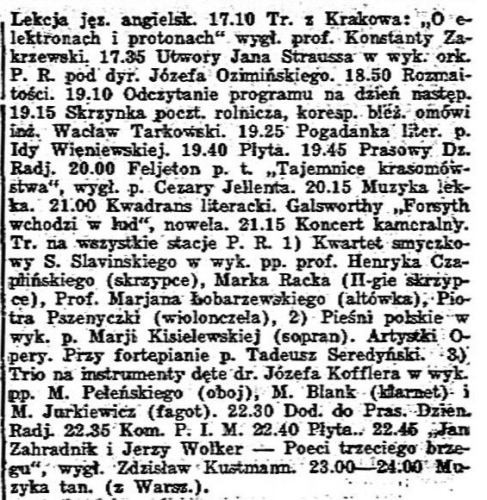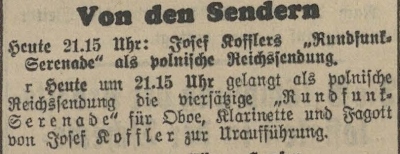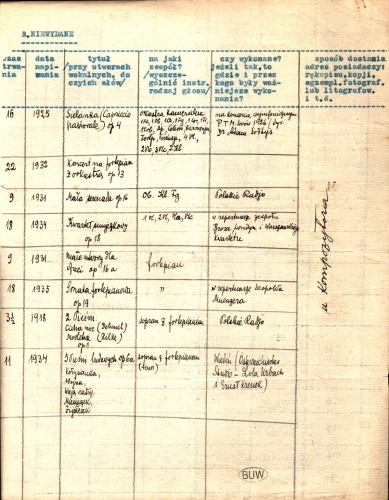![Little Serenade [Divertimento] for oboe, clarinet, and bassoon, Op. 16 / Little Pieces for Children, Op. 16a (1931)](/upload/2025/03/little-serenade_ai.webp)
Little Serenade [Divertimento] for oboe, clarinet, and bassoon, Op. 16 / Little Pieces for Children, Op. 16a (1931)
Manuscript: Unknown
Premiere: [radio premiere of Divertimento] 11 May 1932 (Wiadomości Radjowe 1932, no. 13)
which is why we may only discuss some general features of this piece on the basis of period documents. The radio programme for 11 May 1932 announces ‘a wind trio by Dr Józef Koffler, performed by M. Pełeński (oboe), M. Blank (clarinet), and M. Jurkiewicz (bassoon)’, to be broadcast at 9.15 p.m. as part of a chamber music concert from Lwów’ (Wiadomości Radjowe 13 (1932)). The broadcast was also announced on the same day in Dem Wiener Tag, where the piece was labelled ‘Rundfunk-Serenade’, which suggests that it was written (like Symphony No. 1) specifically for the radio. This was its likely world premiere.
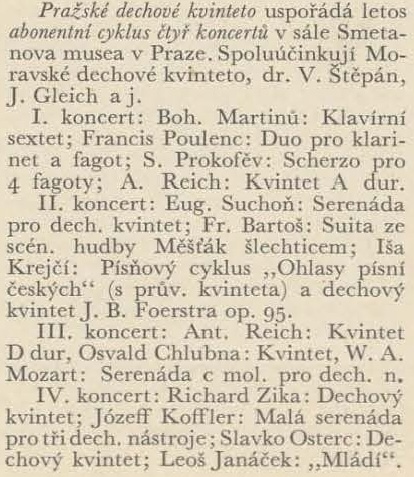
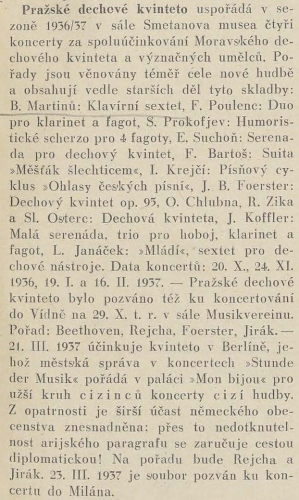


From a later press note (Muzyka Współczesna 7–8 (1936), 4) we may glean that it was probably performed in the autumn of 1936 in Prague by members of the Prague Wind Quintet. The Czechoslovak music journals also reported on plans to perform the Divertimento – it was included in the program of the fourth in a series of concerts organized at the Smetana Museum Hall in Prague.
However, its musical content can only be conjectured, but it is highly probable that – despite the title's suggestion of belonging to the genre of "lighter" music – it was, like Koffler's other works from this period, dodecaphonic.
In a list of works compiled around 1935, Opus 16 is reserved for Little Pieces for Children. Since Koffler was in the habit of using letter indices for arrangements of his own works for other instrumental groups (as had been the case with his Fifteen Variations on a Twelve-Note Row, Opp. 9 and 9a), Gołąb conjectures that those ‘pieces for children’ were a piano transcription of Little Serenade, Op. 16. Gołąb also claims that the same musical material was used again in Chotyry dytyachi p’esy [Чотири дитячі п'єси] for piano, printed in 1940 in Kyiv (without opus number).
